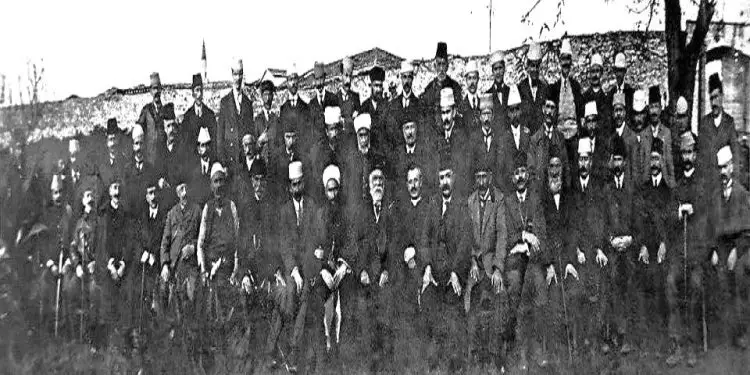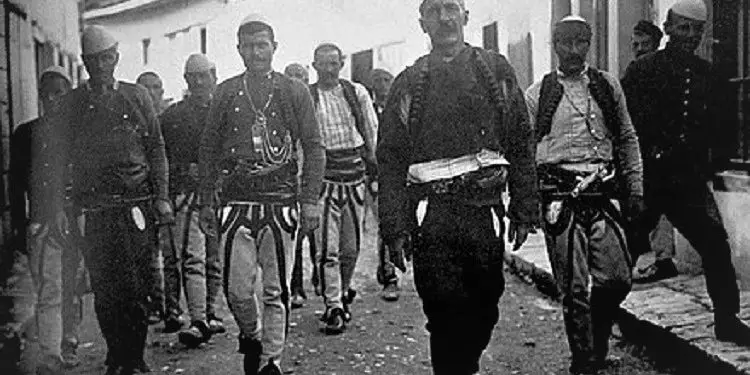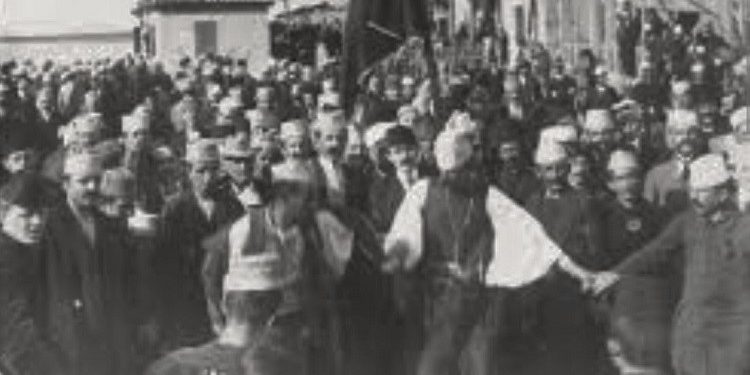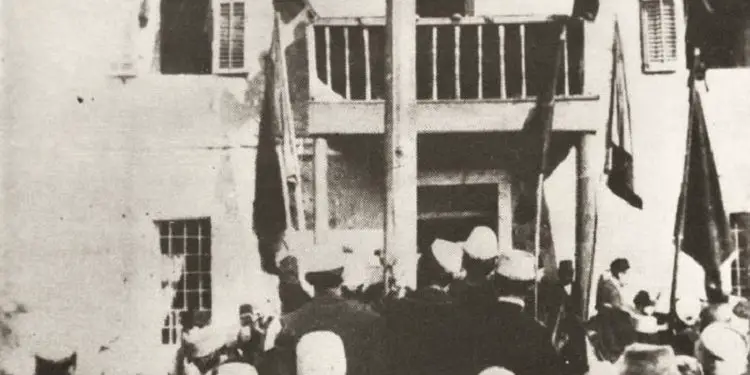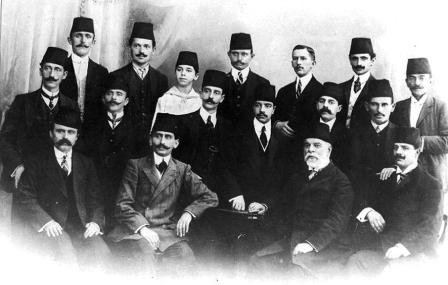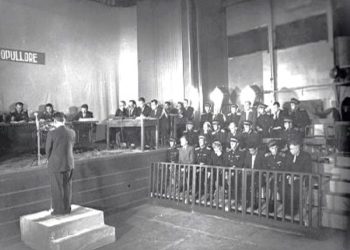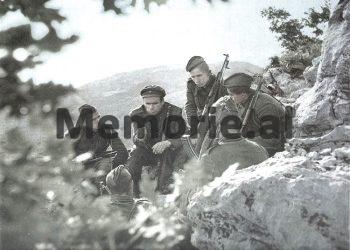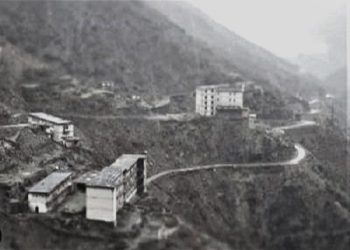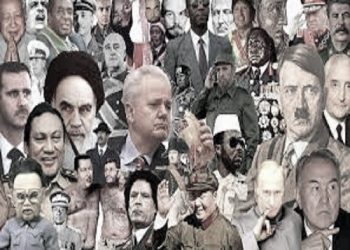By Prof. Vehbi Xhemaili
Part One
Memorie.al / Ismail Qemali, with his own hand raised the Flag of Independence, embroidered with gold thread. So, Ismail Qemali raised the Flag embroidered with circles of leaves from Marigoja, on which flag was written and the slogan: ‘Long Live Albania’. This flag symbolizes the unity of the Albanian people wherever they live as a single nation in the Balkans. This Flag was later burned by the Greeks. With this national act, the full Independence of Ethnic Albania was declared. After this act, the Chairman of the Provisional Government of Vlora, on November 29, 1912, addressed the consuls of Vlora by telegram, the first telegram of notification was sent to the consul of Austria-Hungary, then to Italy, France, Germany and Russia, through which he announced the declaration of the Independence of Albania and requested official recognition from them.
HISTORY AND ORIGIN OF THE NATIONAL FLAG RAISED IN VLORA, ON NOVEMBER 28, 1912
With the act of the Declaration of National Independence on November 28, 1912; it is said that; Marigo Pozio overnight embroidered only the fringes of the flag (not the entire flag), which Mr. Spiridon Ilo had brought from Bucharest.
Meanwhile, Vangjo Ilo (son of Spiridon Ilo) in his memoirs, says that; “the flag that his father brought from Bucharest to Vlora, was printed, not embroidered and its dimensions were 1 meter by 80 cm. This flag was not embroidered with gold thread, as has been claimed so far, but had yellow fringes, which, as stated above, were embroidered by Marigo Pozio.
There is another version about the flag being brought to Vlora, which is related to the name of Marigo Pozios. Often among the Albanian community living in America, on the very day of the Declaration of Independence, it is rumored that the flag that was raised in Vlora was embroidered in Boston, Massachusetts, where Kristo Dako also worked.
The newspaper “Dielli”, published in the USA, also wrote about this issue. In an article by Qerim Panariti, it is stated as follows: We sent the flag from Boston to Corfu, a year before it was raised in Vlora, by Mr. Ismail Qemali.
All expenses for the embroidery, packaging and sending of the flag were made by our company “Besa-Besë”. Further, Mr. Panariti says that; “the duty of the flag bearer was assigned to Mr. Naçi Nuçi, the latter was also a member of the Albanian Secret Committee for the Freedom of Albania, founded in Manastir, in 1905, as well as a former member of the “Bashkimi” club.
“He was also accused by the Turkish government bodies as a school principal, on the pretext that the girls’ school principal of Korça had requested from the consul August Kral to provide the school with a map of Albania, compiled by Faik Konica. He was also a close collaborator of a commercial school in Corfu and helped Albanian merchants.”
Mr. Naçi was also a friend of the merchant couple, Pozio from Vlora, to whom he entrusted the flag to be taken to Vlora and kept hidden until requested by the patriots, who had decided to separate Albania from Turkey.
The flag was entirely made of red silk, surrounded by a gold fringe and in the middle it had a two-headed eagle, in black. The carrying pole was made of bamboo and painted with gold, at the top of which was an eagle, with two heads of ivory…”!
For other details about how Marigo brought the flag to Vlora, the press in Tirana also wrote, based on the account of the president of the “Albanian-American” society, Koli Rodhe. It is noted that Marigo Pozio from Hoçishti i Korça (the wife of a Vlora merchant), although she was in Corfu that day, unable to bring a man into Albania (due to major customs obstacles from the Turkish authorities), this was done by Marigo Pozio, who wrapped it inside her outer clothing and brought it to Vlora.
WHAT IS THE TRUTH ABOUT THE FLAG THAT WAS RAISED IN VLORA?
The issue of the origin of the arrival of the National Flag: Marigo Pozio, Qamil Panariti, Spiridon Ilo, Eqërem bej Vlora, – the last variant, seems more credible and this is exactly where we thought we would stop: In the Central State Archive, there is a letter from Prime Minister Koço Kota, dated February 10, 1930, addressed to the Ministry of Foreign Affairs of the Albanian Kingdom, which states: “The Ministry of Internal Affairs, based on the investigations carried out by the Vlora Prefecture, with its letter No. 8431/1, dated 29.01.1930, announces that the first flag that was raised in Vlora, on 28 XI. 1912, is in the hands of Mr. Eqrem Vlora, Minister of the Kingdom in Athens”
Another evidence: is that of Rauf Fico, Minister of Foreign Affairs, which states; “The Ministry of Internal Affairs, with a letter, informs us that, as per the investigations carried out by the Prefecture of Vlora, the first Flag that was raised in Vlora, on 28. XI. 1912, is in the hands of your Mr., since our Government has decided to collect historical items in the National Museum, it would be a very valuable patriotic gesture if you would be kind enough to donate it to the museum in question, where visitors can come to see the first sacred symbol of our national Independence”.
In the letter, after thanking the Ministry of Foreign Affairs, which finally remembered to return the flag rose in Vlora, to museum material, he regretfully says that; that flag no longer exists!
Later in the letter, Mr. Vlora emphasizes that this flag, after the end of the Vlora Assembly (28. XI. 1912), was returned to his house and continued to keep it as sacred. However, in 1914, when the rebel forces of Central Albania entered Vlora, for fear that they would find the flag (because the houses of the Albanian beylers, which had western orientations, were completely burned), Mrs. Delvina, a patriotic woman who had stayed in his house, during her departure from Vlora, to Delvina, took the flag with her.
Mrs. Delvina carefully guards this flag (like the eyes of her forehead), along with her personal belongings. In this honorable situation, when in 1914, the Greek forces “Verio-Epirote” entered the South of Albania, which claimed the unification of this Albanian part with Greece, attacked Delvina and since the family of Mrs. Delvina was in the focus of persecution, she was forced to move to Corfu, leaving everything they had in their house.
During the invasion operations, the Greek army, after having looted, burned and devastated Delvina, set fire to the Delvina’s house and together with the belongings left inside the house, the flag was also burned.
In conclusion, based on these documents, it seems that all versions related to the fate of the historical flag, which on November 28, 1912, was raised by Ismail Qemali on the balcony of the house, where the Vlora Assembly was held on November 28, 1912 and independence was declared with 37 delegates and then 63 (the reasons). (28. XI- 7. XII).
WHO IS THE PATRIOT FUAT DIBRA, WHO MELTED ALL THE WEALTH FOR THE NATION AND ETHNIC ALBANIA?
On this occasion, we should not forget the great financial assistance provided by the tireless patriot Fuad Dibra, who voluntarily gave Ismail Qemali over 30 thousand gold napoleons to operate in the diplomatic courts of Europe. This great patriot also paid the newspapers that published articles in favor of our national cause. Fuat Dibra personally spent over 500 thousand gold francs for the Albanian delegation that stayed in Paris for over six months.
This patriot melted down 5 of his hotels in Paris for the benefit of the national cause. This tireless patriot of the Albanian national cause comes from a patriotic family, his father, Ismail Hoxha, held high positions in the Ottoman Empire, and financed the Congress of Manastir and Dibra. (V.Xh).
Fuat Dibra has collaborated closely besides Ismail Qemali, also with Dervish Hima, (Ibrahim Temon), Rexhep Mitovicë, Bedri Pejani, Lev Nosi, Mit’hat Frashëri and Shefqet Shkupi. This has played a very positive role, on the occasion of the national unification in the liberated lands from Tetovo, Struga to Dibër.
On October 16, 1943, the National Assembly was convened in Tirana, which proclaimed the “High Council of the Regency” composed of Mehdi Frashëri, Fuat Dibra, At Anton Harapi e, Lef Nosi and on November 5, 1943, the Regency appointed the government with Prime Minister Rexhep Mitrovica, who was also entrusted with the duty of Minister of Popular Culture.
Fuat Dibra, was also the Commander-in-Chief of the Albanian Volunteer Forces, appointed by the Second Prizren League Committee. For these merits, the Mayor of Tetova, Shuaip Kamberi, on the occasion of the death of this great patriot, in 1944 in Tetova, and the surrounding area, declared three days of mourning. But after the war, even though he melted down all his wealth for the good of the Nation, the communists took him out of the city cemetery in Tirana.
TAJAR TETOVA-DERRALLA, IN THE VLORA ASSEMBLY
On this occasion, it should be noted that in Vlora, the Albanian officer, Tajar bey Tetova, also participated. During the Young Turk Revolution, he killed and waited for Turkey. But he was finally convinced that it is better to fight for the nation than for Turkey. (That is why it is good when Albanians are finally convinced “that the nation is above everything”.).
This washed-up officer from Tetova, in June 1912, abandoned the Turkish army and went to the mountains. The departure of Tajar Tetova and other soldiers to the mountains greatly influenced the expansion of the uprising in the area of Manastir and Dibra, until the declaration of Albania’s independence.
Based on the latest documents, Tajar bey Tetova also made a great contribution to the declaration of independence of Albania in 1912, when Ismail Qemali sent him to Dibër with a delegation, with the aim of the Dibër region joining the Government of Vlora. Which had raised the flag on November 27, 1912?
This was the reason why these fanatics wanted Tajar Tetova to be imprisoned, since these dogmas that fought for the return of Turkey to our lands, declared Tajar anti-Turkish and wanted his head. For this reason, Tajar Tetova will return to Elbasan, hiding to escape the pursuit of Haxhi Qamili’s rebels, who were looking for him to kill, as a person with anti-Turkish ideas.
ISMAIL QEMALI WITH HIS HAND DECLARED THE INDEPENDENCE OF ALBANIA IN THE NAME OF THE FOUR PROVINCES: KOSOVO-MANASTIR-SHKODRA AND IANNINA
Heroic Vlora welcomed the delegates with great enthusiasm and an indescribable atmosphere, on the evening of November 26. So the Albanian delegation did not arrive in Vlora on the 25th, as has been written so far, but on November 26.
Upon arriving in Vlora, Ismail Qemali began preparations in his hometown for the declaration of Independence. The Turkish flag was still flying in the city and its administration was functioning. The first task of the national leader was to organize the armed forces.
To this end, he formed an organizing committee and sent a circular to the village elders, ordering them to mobilize capable people for the defense of the future Albanian Government, which would be proclaimed soon.
In these extraordinary circumstances, when the Serbian army was besieging Durrës, the delegates who had arrived in Vlora held a consultation on the evening of November 27, where they decided that the proclamation would be made the next day, November 28.
By that time, representatives from several provinces had not yet arrived. According to the information that Ismail Qemali had received, a large number of delegates were still on the move, through the difficult roads of Albania.
There were cases when many delegates, in order to pass the trap of the Serbian army, had to wear women’s veils, as is the case with the well-known patriot from Dibra, Sherif Langu, who until the fall of Kosovo and Dibra, in the hands of the Serbian army, held the post of head of the Mufti’s office in Dibra. To go to Vlora, he traveled from Dibra, Elbasan, for more than 10 days, to arrive in Vlora, at the act of the Declaration of Independence.
Because at this time, Manastir, Struga and Ohrid were in the hands of the Serbian army. This patriot after World War II was sentenced to 10 years in prison by the communist government and that in deep old age when he had turned 70. “Sherif Langu declared these testimonies in prison before Mehmet Shehu. When I was for Albania, your father thought of Baba Dovlet” (V.Xh).
THE OHRID PRINCE SUPPORTED THE INDEPENDENCE ACT
Even the prime minister (of Albanian origin) of that time in Romania, Taqe Junescu, and an Albanian originally from Ohrid, sent Ismail Qemali 500 thousand gold francs to cover the travel expenses. Due to the difficult circumstances of going to Vlora, the principality of Ohrid and Struga, on November 27, sent Ismail Qemali a telegram, in which they announced that: “They stand in solidarity for the Declaration of Independence of Ethnic Albania”.
The telegram is signed: Myderisi Sheh Ismaili, Sheh Hasan Abdullahu, Emurlla Nexhati Abdylqerim, the local Qadi Hysni Huseini, Mehmet Fehmiu, Haxhi Jaha and Hajdar Pasha, on behalf of all the neighborhoods of Ohrid.
Although Kosovo and other eastern territories were occupied by the Serbian army at this time, the Vlora Assembly was attended by; Rexhep Mitrovica, Sali Gjuka and Bedri Pejani, as representatives of Gjakova, Peja and Gucia. After Hasan Prishtina, on the historic day of the declaration of national independence, was locked up in the Belgrade prison, together with Idriz Seferi, Nexhib Draga and several other well-known leaders, after the Albanian Uprising of Kosovo in 1912. (See Vebi Xhemaili’s book, ‘The Albanians of Today’s Macedonia’ 1843-1913).
REXHEP MITROVICA, THE FIRST NOMINATED ISMAIL QEMALI AS PARLIAMENTARY CHAIR
In the newspaper “Përlindja e Shqipërisë”, it is written that; “At the solemn opening of the Great Assembly of Vlora, before the delegates and men who came from all the ethnic Albanian lands (we are talking about the four Albanian vilayets), after the verification of the mandate, Rexhep Mitrovica took the floor, who proposed that Ismail Qemali be appointed as the president of the First National Assembly, Luigj Gurakuqi as the first letter, and Shefqet bey Daiu as the second letter. The delegates unanimously accepted this proposal, with a clap of hands.”
Later, the Act of Independence was also noted by Lef Nosi in the collection of “Historical Documents”, but the communist regime of Enver Hoxha falsified these and many other documents, thus covering the names of Rexhep Mitrovica, Mit’had Frashëri, Lef Nosi, Dervish Hima, Fuat Dibra, Mehmet Derralla and several other nationalists who fought their whole lives for the unification of the nation. These were erased, not only from the relevant document but also from national history. Memorie.al




